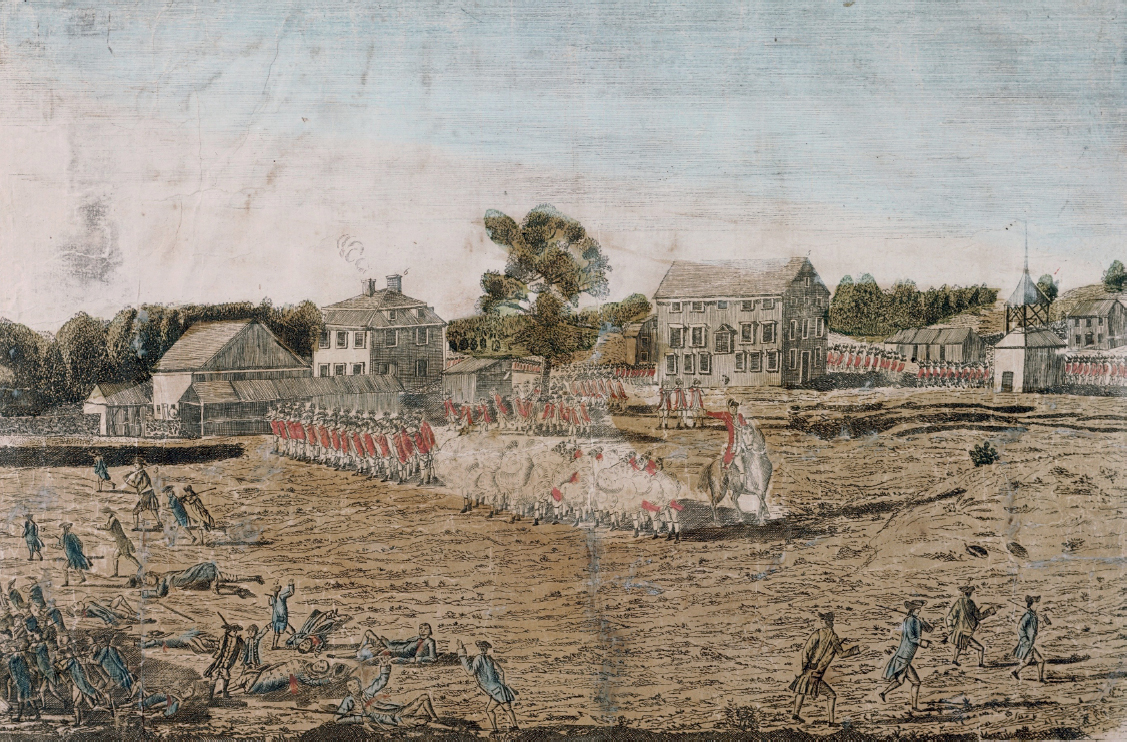Exploring American Histories: Printed Page 163
Exploring American Histories, Value Edition: Printed Page 138
Armed Conflict Erupts
As debates over independence intensified, the Sons of Liberty and other patriot groups not only spread propaganda against the British but also gathered and stored weapons and organized and trained local militia companies. Female patriots continued the boycott of British goods but began to manufacture bandages and bullets as well. Some northern colonists freed enslaved African Americans who agreed to enlist in the militia. Others kept close watch on the movements of British troops.
On April 18, 1775, Boston patriots observed British soldiers boarding boats in the harbor. The British were headed to Lexington, intending to confiscate guns and ammunition hidden there and in neighboring Concord and perhaps arrest patriot leaders. Hoping to warn his fellow patriots of the approaching soldiers, Paul Revere beat them to Lexington but was stopped on the road to Concord by the British. By that time, however, a network of riders was spreading the alarm. One of them alerted Concord residents of the impending danger.
Early in the morning of April 19, the first shots rang out on the village green of Lexington. After a brief exchange between British soldiers and local militiamen—known as minutemen for the speed with which they assembled—eight colonists lay dead. The British troops then moved on to Concord, where they uncovered and burned colonial supplies. However, patriots in nearby towns had now been alerted. Borrowing guerrilla tactics from American Indians, colonists hid behind trees, walls, and barns and battered the British soldiers as they marched back to Boston, killing 73 and wounding 200.

Word of the conflict traveled quickly. Outraged Bostonians attacked British troops and forced them to retreat to ships in the harbor. The victory was short-lived, however, and the British soon regained control of Boston. But colonial forces entrenched themselves on hills just north of the city. Then in May, Ethan Allen and his Green Mountain Boys from Vermont joined militias from Connecticut and Massachusetts to capture the British garrison at Fort Ticonderoga, New York. The battle for North America had begun.
When the Second Continental Congress convened in Philadelphia on May 10, 1775, the most critical question for delegates like Pennsylvania patriot John Dickinson was how to ensure time for discussion and negotiation. Armed conflict had erupted, but did that mean that independence should, or must, follow? Other delegates insisted that independence was the only appropriate response to armed attacks on colonial residents. Patrick Henry of Virginia declared, “Gentlemen may cry ‘peace, peace’ but there is no peace. The war is actually begun!”
Less than a month later, on June 16, British forces under General Sir William Howe attacked patriot fortifications on Breed’s Hill and Bunker Hill, north of the city. The British won the day when patriots ran out of ammunition. But the redcoats—so called because of their bright red uniforms—suffered more than 1,000 casualties, while only half that number of patriots were killed or wounded. This costly victory allowed the British to maintain control of Boston for nine more months, but the heavy losses emboldened patriot militiamen.